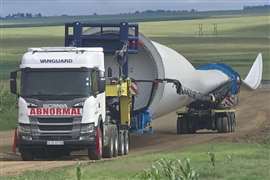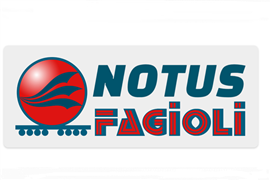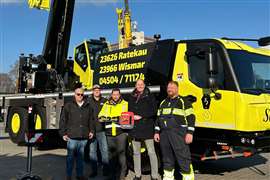Read this article in French German Italian Portuguese Spanish
How to avoid metal corrosion on cranes
01 January 2024
Metal corrosion of various types can be a real problem on cranes, says Abdullah K Alghaithan, at Saudi Aramco.
Cranes and other heavy equipment are important in most industries and absolutely vital in areas involving hydrocarbons.
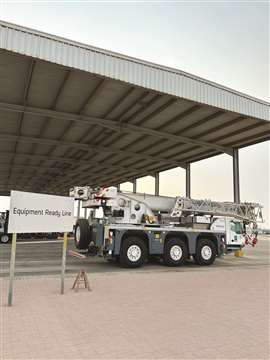
Therefore, property owners and contractors are obliged to apply high levels of maintenance and follow OSHA guidelines. Top safety standards are needed to keep the working environment safe for all in the workforce.
High maintenance costs are a potential challenge for any maintenance organisation serving its assets, many of which cost millions of dollars.
Corrosion, as the gradual deterioration of metal components due to environmental factors such as high temperature, humidity, and chemical exposure, presents a significant challenge in cranes and other heavy industrial equipment. It seriously threatens equipment service life and can lead to huge economic losses, environmental pollution, and even loss of life.
A comprehensive corrosion control policy is essential to achieve and maintain the required levels of quality, safety, and reliability for the maintenance organisation.
Effects of corrosion
Neglecting corrosion control measures in industrial settings has resulted in tragic consequences, including loss of life, injuries, substantial economic losses, and severe environmental damage. Corrosion has been associated with numerous injuries and fatalities. On 15 March 2009, a 50 tonne hydraulic crane accident at a construction site in New York City, USA, killed seven people. The crane was lifting a high load when it suddenly collapsed.
Investigation showed that the crane’s right hand hydraulic lifting cylinder had been poorly maintained and that corrosion had weakened the lifting cylinders. National studies in several countries over the last fifty years have consistently yielded estimates of corrosion costs equating to approximately 3 to 4 per cent of each nation’s gross domestic product (GDP). When considering a global GDP figure of 3.4 % (as of 2013), the estimated worldwide cost of corrosion stands at a staggering US$2.5 trillion.
Another study, conducted from 1949 to 1994, summarised the economic losses resulting from corrosion in the following table.
| Country | Year | Direct economic loss |
| USA | 1949 | 5.5 ( $ billion ) |
| USA | 1966 | 10 ( $ billion ) |
| USA | 1967 | 8 ( $ billion ) |
| USA | 1975 | 70 ( $ billion ) |
| USA | 1979 | 70-82 ( $ billion ) |
| USA | 1988 | 200 ( $ billion ) |
| USA | 1994 | 300 ( $ billion ) |
| Germany | 1968-1969 | 20 ( $ billion ) |
| Germany | 1978 | 47 ( $ billion ) |
| Germany | 1988 | 89 ( $ billion ) |
| Germany | 1994 | 123 ( $ billion ) |
| Canada | 1979 | 10 ( $ billion ) |
| Australia | 1973 | 301 ( $ million ) |
| UK | 1971 | 1661 ( $ million ) |
Table 1: Examples of economic loss by corrosion
Corrosion control
Maintenance solutions for corrosion control are an essential component of industrial operations, ensuring the longevity, safety, reliability and efficiency of heavy equipment and infrastructure. By implementing effective corrosion control practices, it is projected that significant savings ranging from 15 to 35 % of the corrosion-related expenses could be achieved, translating to annual global savings of approximately $375 to $875 billion.
These solutions encompass a range of strategies, from protective coatings to predictive maintenance, all aimed at mitigating the destructive effects of corrosion. Implementing effective maintenance solutions not only safeguards valuable assets but also minimises economic losses, environmental impact and potential safety hazards. The following are the best industry practices for maintenance solutions to fight corrosion.
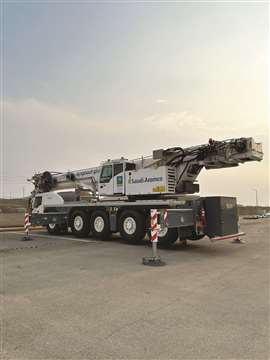
International standards
These play a pivotal role in corrosion control and maintenance solutions for heavy industrial equipment, offering a universally recognised framework that underscores consistency, quality, and safety in practice. Some of the standards regarding corrosion applicable for cranes and industrial equipment are explained below.
Take, for instance, ISO 12944, which provides directives for protective coatings, encompassing coating types, application methodologies, and inspection criteria. These standards ensure a standardised approach to safeguarding against corrosion across diverse industrial settings, including cranes and industrial equipment.
ISO 8502 deals with preparation of steel substrates before application of paints and related products, tests for the assessment of surface cleanliness and assessment of dust on steel surfaces prepared for painting. This standard can be applied to cranes and heavy equipment made of steel structures.
Further care
Advanced maintenance methods and technologies are needed. Beyond adhering to international standards, there are several advanced methods and innovative approaches for maintenance solutions in corrosion control. When integrated into corrosion control practices these enhance corrosion mitigation.

Figure 1: Visualisation of predictive maintenance
Predictive maintenance through condition-based monitoring harnesses the power of artificial intelligence (AI) and predictive analytics to anticipate corrosion rates and fine-tune maintenance schedules. By seamlessly integrating a multitude of sensors and state-of-the-art technologies, condition-based monitoring programmes continuously evaluate the health of equipment, collect and process data and precisely detect any anomalies.
Advanced cathodic protection systems, such as impressed current cathodic protection (ICCP), provide more precise control over corrosion inhibition. This proactive strategy not only minimises downtime but also optimises maintenance efforts, ensuring that resources are deployed precisely when needed to combat corrosion effectively.
Finally, a corrosion management system (CMS) should be incorporated to the corporate management system. Integrating corrosion management effectively within an organisation requires more than just technology. It requires integration of corrosion decisions and practices within an organisation’s management system. This integration spans from specific corrosion procedures to overarching organisational policies and strategies, covering all levels of the management system.
To maximise the benefits of corrosion management, it is crucial to convey traditional corrosion practices in the language and context of organisational policies, ensuring that all levels of the organisation are committed to the corrosion management system. This will help in managing corrosion processes across all stages of asset integrity management. This is depicted in the following figure.
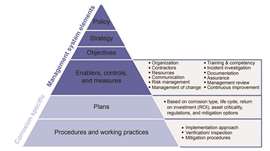
Figure 2: Corrosion management system pyramid
Providing methods and solutions on how to measure and improve the quality of maintenance is a key item for any maintenance organisation. Corrosion control poses significant challenges and risks, but by implementing proper maintenance processes and procedures, the detrimental effects can be mitigated. Corrosion control focuses on ensuring the efficient operation and upkeep of physical assets, whether it is a maintenance facility, a commercial building, or a fleet of vehicles.
By following maintenance guidelines and referring to international standards, any maintenance organisation can enhance the safety, reliability, and longevity of their cranes and heavy equipment.
STAY CONNECTED


Receive the information you need when you need it through our world-leading magazines, newsletters and daily briefings.
CONNECT WITH THE TEAM









